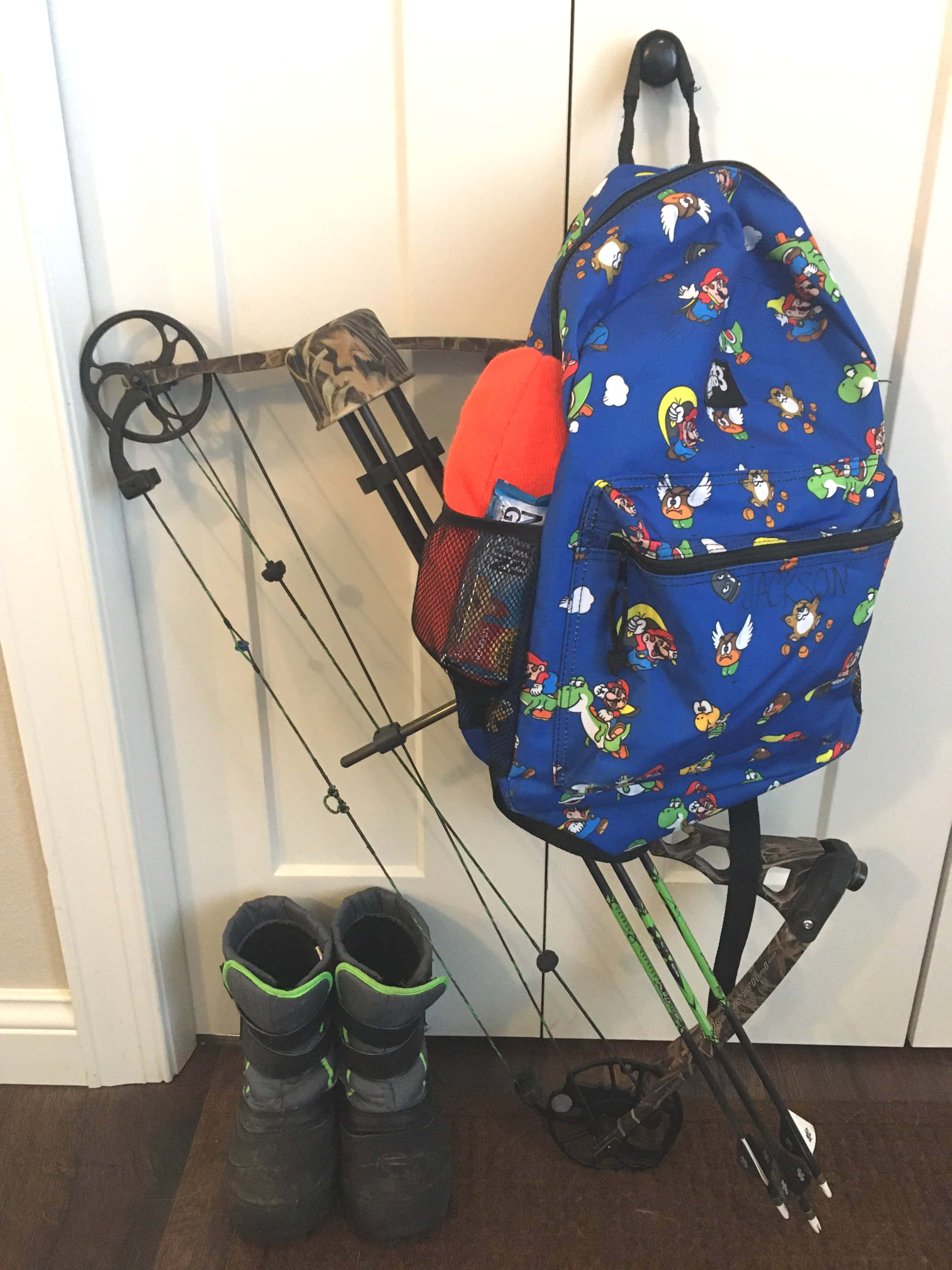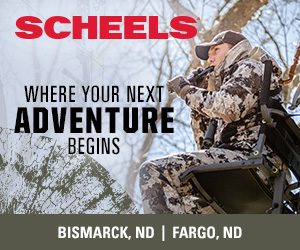
Bows are becoming as commonplace in schools as books, hot lunch and math class thanks to a simple, inexpensive addition of NASP to the curriculum. As a result, more kids are becoming competitive archers, setting the scene for a strong influx of bow hunters in the coming years. Simonson Photo
By Nick Simonson
While the cold might be forcing kids to bundle up on the way to school, many of those same students are finding the archery scene heating up throughout the region.
In January and February alone as part of the National Archery in Schools Program (NASP) more than two dozen shoots in North Dakota and South Dakota have kept and will keep archers in grades four through twelve busy right on up to the state tournaments set for late March. NASP’s success, however, goes far beyond the thousands of students participating, and taps into a main-lined market of potential new hunters by becoming part of many schools’ curriculum in both states.
“[NASP] is run nationally and appears in 47 states and several Canadian provinces and countries throughout the world,” states Jeff Long, the ND NASP Coordinator, “the brilliant thing about it is they’ve kept it standardized to where every state does it the same way and it’s very simple,” he continues, adding that the uniform training, equipment and methods by which each administration offers the program during school hours as part of their physical education curriculum opens up a whole new world of activities to students.
With its beginnings in 2003 following the introduction of the program to 21 schools in Kentucky, NASP has grown to become a nationwide phenomenon and has expanded outside of the U.S. into Canada and overseas countries such as Namibia, Zimbabwe and New Zealand along with several others. The simplicity and low cost of starting a program in any school and making it part of the physical education curriculum has kept it growing year after year and has helped attract more archers to competitive shooting in optional NASP tournaments and in other archery leagues and events.
As part of the uniform nature of the program, each school that signs up is provided with a dozen bows and five targets to introduce their students to archery as part of a gym class, with grants available from many state agencies, the state NASP programs and from the national office to help offset those costs where needed. This in turn keeps expenses low for those looking to participate.
“A kid could get involved in NASP and even go to tournaments for the eight dollar fee and the cost of getting to the tournament; they could just use the school’s bow if the school has it set up for them to do that, and most of them do,” Long advises, stressing that the standard Mathews Genesis bows provided in the starter pack fit the bill for most beginning archers in their early years of competition.
With the increased mainstreaming of archery in the schools, Long notes an uptick in those students making the leap to more dedicated competition circuits. In North Dakota approximately 1,000 kids participate in the State Tournament held in March of each year coming out of their school’s program, and that a developing archery scene throughout the state is increasing the number of hard-core archers being created by NASP.
“Perhaps a quarter of the kids are doing something after school, whether that something is the tournament thing or whether it’s an intramural program in that school is hard to say, but I would certainly think there’s somewhere in the neighborhood of 1,200 to 1,500 kids that are pretty dedicated and going to multiple tournaments,” Long speculates on North Dakota’s growing population of dedicated young archers.
In an era where hunter numbers are declining throughout much of the nation, the increase in archery deer tags sold by the North Dakota Game & Fish Department (NDG&F) year-over-year is an obvious bucking of the trend. Whether that’s a function of the 10,000 participants in NASP graduating to the challenge of big game hunting with a bow is hard to say, but Long – also an outdoor skills coordinator for the NDG&F – suspects that the program’s growth will only help those burgeoning numbers of bow hunters in the field in the coming years.
“You take 10,000 kids and you put bows in their hands in the school – how is it possible that’s not a good thing for shooting sports, for communities, and eventually for hunting, even if it takes a while for that seed to germinate?” Long ponders, adding that finding the ratio of archers that become bow hunters is now becoming the bigger question in his job with the state agency, “we have to figure out how can we get that information, how can we track it and see how this program is performing [in terms of hunter recruitment].”
Whether or not NASP is the golden arrow for sustaining hunter numbers, it certainly is one that agencies like to have in their quivers as part of their recruit-retain-reactivate (R3) programs. Schools too are finding that the program fills a void and offers a more diverse portfolio for physical education classes simply by providing an inexpensive, simple and fun activity that anyone can try and find a challenge in mastering, which is inclusive of all shooters regardless of gender, age or ability.
“You’re talking boys and girls, fourth grade to twelfth grade; not only can they all do it, but they’re doing it side-by-side…we’ve had kids in wheelchairs, we’ve had blind kids, we’ve had two kids a couple years ago, both of which had no use of at least one hand that shot using a mouthpad, so you’ve got a program that really spans a whole wide variety of students in a school and that’s an attractive thing for people that are looking to give kids a rich educational experience,” Long explains, adding that those who are blind, deaf or otherwise impaired are allowed an assistant on the line when participating in their school’s program or on the tournament scene.
With such inclusivity ingrained into the standardized program, it’s easy to see the reason for tens of thousands of students that have at least been exposed to archery in the past two decades and a solid percentage of them are finding that it is their sport which they can pursue for a lifetime on the range and in the field. For more information on NASP, visit NASPschools.org and for upcoming tournaments in all locations where the program is in place, visit NASPtournaments.org.
The North Dakota State 3D and Bullseye Tournaments are set for Mar. 20 and 21 in Minot, N.D. and South Dakota’s 3D and Bullseye Tournaments will be Mar. 13 in Salem and Mar. 20 in Rapid City, respectively.

